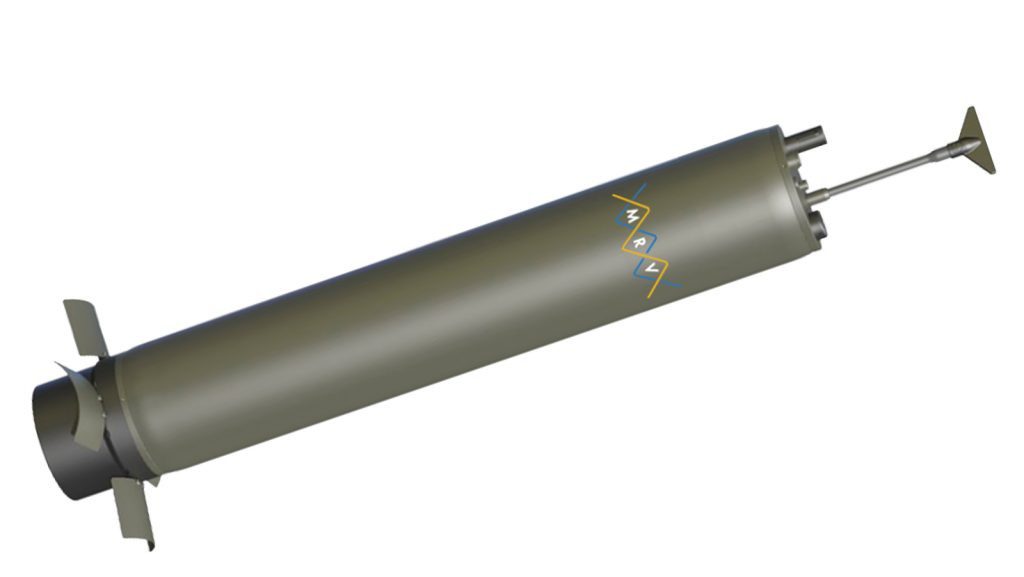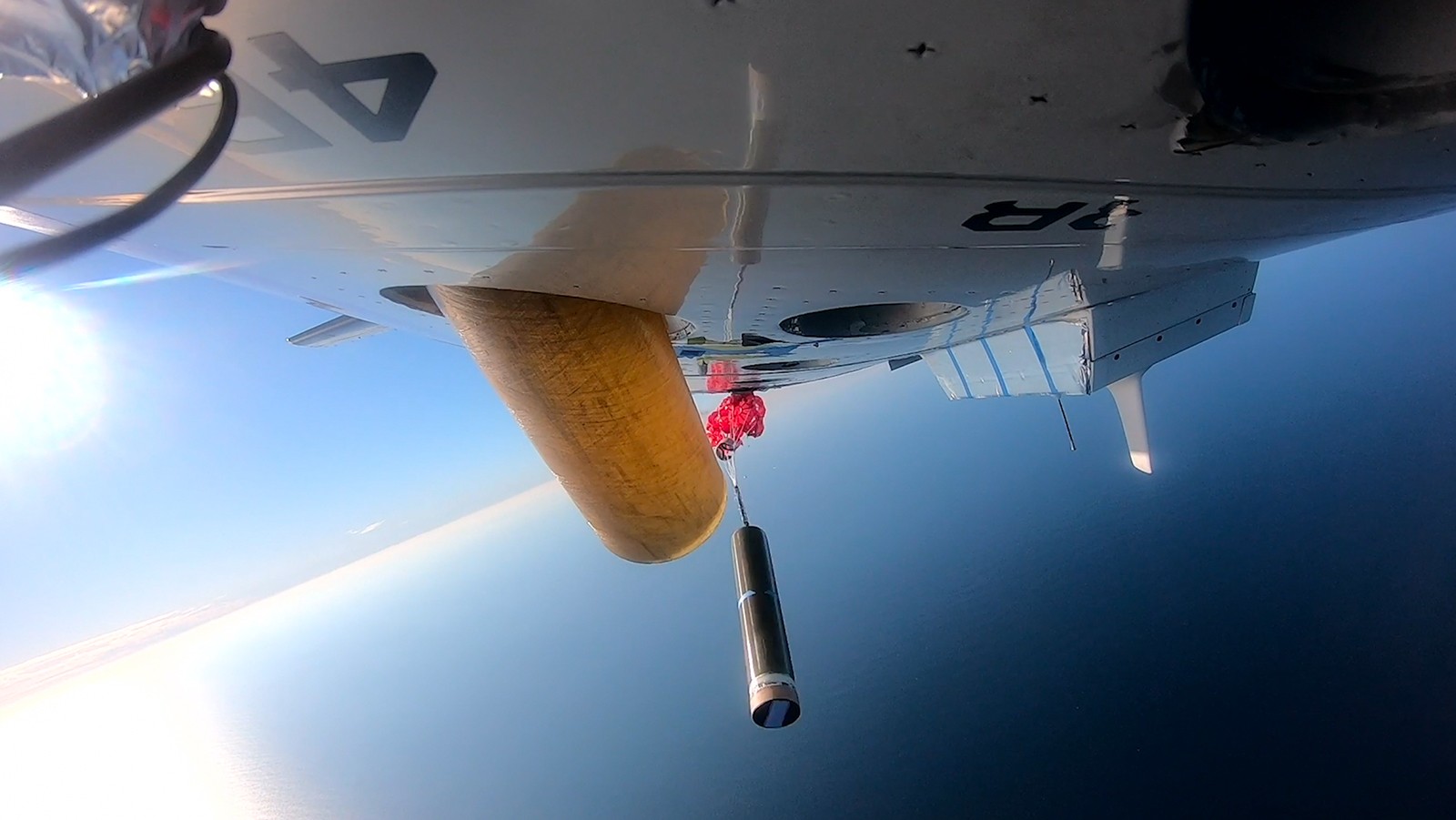In the past decade, hurricane track forecasts have improved greatly. However, accurate intensity forecasting remains a challenging scientific problem. Because the ocean plays a critical role in fueling hurricanes, we need to better understand how ocean conditions affect hurricane intensity. The most direct way to reduce this uncertainty is to conduct targeted upper-ocean temperature and salinity measurements ahead of and inside tropical cyclones where it is difficult for manned aircraft to fly. By deploying uncrewed systems such as AOML’s new ALAMO floats, scientists at AOML will gain insight into how the ocean drives major hurricanes, targeting storms that threaten landfall in regions with strong salinity or shallow temperature stratification. This data can then be used in hurricane research models to reduce intensity forecast error.
In January 2021, AOML in partnership with NOAA’s Aircraft Operations Center (AOC) completed the air launch testing of the Air-Launched Autonomous Micro-Observer (ALAMO) profiling float. This testing cleared the ALAMO floats for flight and deployed from the NOAA P3 Hurricane Hunter aircraft during their hurricane reconnaissance missions. The data collected and transmitted by the ALAMO floats will be used to understand the ocean’s interaction with tropical cyclones and improve coupled hurricane forecasting models. The floats will measure temperature, salinity, and pressure in the upper 300 m of the ocean, profiling every 1-2 hours for several weeks.
In-situ observing platforms for targeted temperature and salinity profile observations include an array of different technologies. ALAMO profiling floats, underwater gliders, thermistor chains, and Airborne eXpendable BathyThermographs (AXBTs) are all tools to collect ocean data. Of these options, only the ALAMO float is air-deployable from the Hurricane Hunter, performs multiple profiles, and can be controlled by a land-based pilot to adjust sampling schemes. The ALAMO float’s development was supported by NOAA’s Sandy Supplemental funding from the Disaster Relief Appropriations Act of 2013 with the goal of enhancing the capability for making targeted ocean observations before and during major tropical cyclones.
The ALAMO float was designed to follow the A-size sonobuoy specifications, meaning it could be air-deployed from existing platforms equipped with an A-size launch tube, such as NOAA’s P3 Hurricane Hunter or the US Air Force C-130. Once deployed, the observed temperature and salinity profiles are reported to scientists and researchers back on land via the Iridium satellite network. The profile data are then automatically processed and posted to the Global Telecommunication System (GTS) for use by the operational community to improve the ocean’s representation in ocean-atmosphere coupled forecast models.

ALAMO floats will be deployed directly ahead of and inside major tropical cyclones from the NOAA P3 for the first time during the 2021 Atlantic hurricane season. Funding for the mass models used in the test drops was provided by PHOD, and funding for flight time to conduct the tests aboard the P3 was provided by GOMO.
